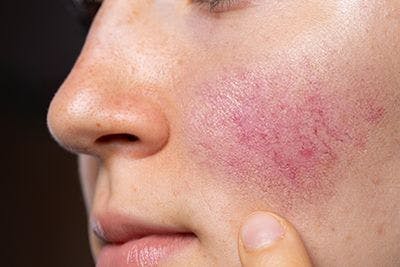- Acne
- Actinic Keratosis
- Aesthetics
- Alopecia
- Atopic Dermatitis
- Buy-and-Bill
- COVID-19
- Case-Based Roundtable
- Chronic Hand Eczema
- Chronic Spontaneous Urticaria
- Drug Watch
- Eczema
- General Dermatology
- Hidradenitis Suppurativa
- Melasma
- NP and PA
- Pediatric Dermatology
- Pigmentary Disorders
- Practice Management
- Precision Medicine and Biologics
- Prurigo Nodularis
- Psoriasis
- Psoriatic Arthritis
- Rare Disease
- Rosacea
- Skin Cancer
- Vitiligo
- Wound Care
Publication
Article
Dermatology Times
How safe are cosmetics?
Author(s):
Zoe Diana Draelos, M.D., explains the role of preservatives in skincare products and the general safety and efficacy of products when it comes to protecting the skin against environmental factors.
Are preservatives in my cosmetics killing me?
The simple answer is “no.” Preservatives are functioning to protect from infection, which may actually be prolonging your life! Yet, it may be worthwhile to take a deeper dive into the role of preservatives in cosmetics.
The most commonly used preservatives in cosmetics are parabens. The incidence of allergic and irritant contact dermatitis due to parabens is extremely low and they are highly effective at killing bacterial contaminants at low concentration.
Lately, many cosmetics contain labels that state they are paraben-free. I find this to be an interesting and clever marketing ploy. The cosmetics industry thrives on new products, new formulations, and new packaging. If you have nothing new to put into your product, you can make it appear new by eliminating an ingredient and replacing it with something else. This is exactly what is happening in the preservative realm.
Many products are eliminating paraben preservatives and replacing them with Kathon-CG, also known as methochloroisothalizolinone. The Kathons are effective preservatives, but they do not have as clean a safety record as parabens. There is a much higher incidence of allergic contact dermatitis, so much so that this category of preservatives is only allowed in rinse off products in the EU, such as hair shampoos and conditioners. The claim “paraben-free” may actually mean the product is less safe.
If the cosmetic product contains water and is not refrigerated, it must contain a preservative. Preservatives are necessary to prevent bacterial growth in water-containing products. The cosmetic products are not designed for ingestion and should not be placed in open wounds where absorption may be enhanced. In general, preservatives in cosmetics are very safe and should not be a source of concern.
Are my cosmetics saving me from skin pollution damage?
Many cosmetics are now claiming to protect from environmental damage and pollution. Is this possible? The answer is “yes,” but some explanation is required. Air pollution is composed of tiny highly reactive nanoparticles produced during the combustion process. Combustion occurs during burning and may arise from the burning of gasoline in a car engine, the burning of coal to run power plants, the burning of garbage in an incinerator, the burning of trees in a forest fire, etc.
These nanoparticles land on the skin and produce reactive oxygen species that damage the skin by perforating dermal collagen and elastin fibers. If the nanoparticle is not allowed to touch the skin, the reactive oxygen species are not formed and no damage occurs.
Most facial foundations and moisturizers place a thin layer of an oily occlusive substance over the skin’s surface. This may be a layer of dimethicone, mineral oil, shea butter, etc. The nanoparticles reside on top of the film unable to penetrate and never touch the skin, thus preventing skin damage. So, yes. It is possible to prevent skin damage from pollution, but any film-forming product will accomplish this goal!
Some cosmetic formulations contain additional antioxidants and claim these ingredients provide skin pollution protection. An antioxidant is a substance able to donate an electron to a reactive oxygen species. Such substances include Vitamin C, Vitamin E, Vitamin A, green tea catechins, resveratrol, etc. While these antioxidants could donate an electron to a reactive oxygen species created when a nanoparticle lands on naked skin, there are many other oxidative insults, such as sun exposure, that are occurring simultaneously. Antioxidants are rapidly consumed on the skin when sun exposure occurs. The challenge is to be sure enough antioxidants are present! Physically trapping the nanoparticles seems to be a more viable mechanism for cosmetic skin pollution protection than chemical antioxidants.

Newsletter
Like what you’re reading? Subscribe to Dermatology Times for weekly updates on therapies, innovations, and real-world practice tips.





























